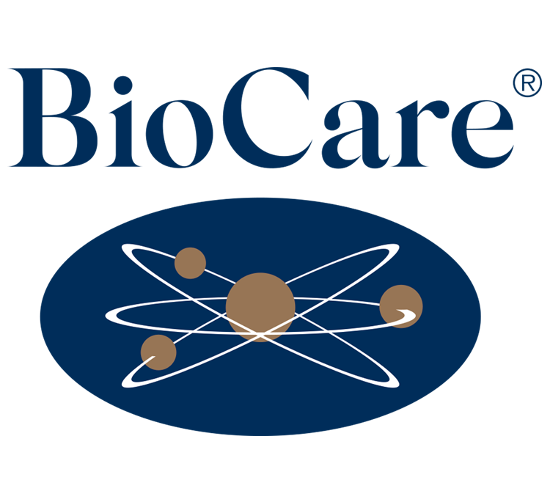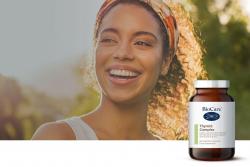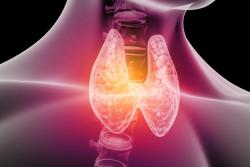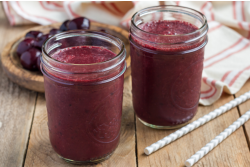Embracing Femininity
Our female hormones, mainly oestrogen and progesterone, define us as women. They give us our female characteristics: softer skin, rounder, gentler facial features, breasts, ability to have children and so on. Yet, the same hormones can make us irritable, depressed, angry, impatient, at times, affecting our own well-being, as well as those around us. Our partners will surely agree, albeit perhaps in secret.
We are talking about the dreaded Premenstrual Syndrome (PMS), of course. PMS is not a single pattern of symptoms. The common underlying link is disruption to emotional and physical well-being that occurs during the luteal phase (after ovulation) of the menstrual cycle. However the actual realisation of symptoms is highly variable and individual, and can include anxiety, depression, fatigue, cravings, water retention, headaches, and muscle cramps.
As with many conditions, the cause of PMS is multifactorial. As you’d expect, fluctuations in oestrogen, progesterone and prolactin are also implicated. Some aspects of PMS symptomatology relate to high oestrogen (increased irritability) in comparison to relatively lower progesterone, and some to low oestrogen (depression). The pattern of high oestrogen - low progesterone is sometimes referred to as ‘oestrogen dominance’. Our genes can also affect how our bodies handle those hormone, making some individuals more prone to experiencing PMS symptoms, or even developing hormonal conditions, such as Polycystic Ovary Syndrome (PCOS) or endometriosis.
Often psychological symptoms occur as a result of hormonal changes affecting neurotransmitter function, or as a side effect of other metabolic changes such as insulin resistance, low cortisol, reduced opioid peptides, dysfunction in circadian pattern of melatonin, changes in electrolytes etc.
Common Underlying Factors
- Inflammation has been shown to be increased in women who experience PMS.[i],[ii] This can be mediated by excess weight,[iii] excessive intake of dairy, alcohol, sugar, and processed food, low intake of omega 3 fats, disrupted sleep/ insomnia, and a pre-existing inflammatory condition such as autoimmunity and allergies.
- High testosterone, particularly associated with PCOS and insulin resistance, is also linked to the angry/irritable type of PMS.[iv]
- High exposure to xenoestrogens – chemicals found in the environment that can act as oestrogen in the body, disturbing our natural hormonal balance. They are released into our food, tap water, and environment from medications such as the oral contraceptive pill (OCP) and hormone replacement therapy (HRT). Other sources include bisphenol-A (BPA) from plastic,[v] mercury[vi] from dental amalgams, topical synthetic products (e.g. cosmetics) containing aluminum,[vii] parabens,[viii] and UV filters.[ix]
- Low intake of nutrients needed for hormone metabolism, namely magnesium, folate, B12, and zinc.[x]
- Chronic stress and high intake of stimulants like caffeine can increase the production of more potent types of oestrogen,[xi] and also decrease our ability to detoxify them effectively.
Supporting PMS Naturally
- Track your menstrual cycle using apps such as the Clue Period Tracker, to help you identify whether your symptoms are worse during the follicular or luteal phase, so you can prepare for them.
- Isoflavones as in red clover act as weak oestrogens in the body and can improve PMS.[xii]
- Support oestrogen metabolism with magnesium, zinc, methylfolate, B6, and methylcobalamin (B12). Increase your intake of green leafy vegetables, nuts and seeds and seafood. Magnesium supplementation (at least 200mg/day)[xiii],[xiv] and vitamin B6 (up to 100mg a day)[xv] may be effective for improving PMS.
- Taking a good multivitamin with good levels of the above nutrients may be an easy and effective way increase your nutrient status and support your hormones and metabolism in multiple ways.
- Sulphur sources containing active chemicals such as sulphoraphane and indole-3 carbinol (found in broccoli, broccoli sprouts, cabbage, and cauliflower) promote oestrogen breakdown[xvi].[xvii] and have anti-inflammatory properties.[xviii]
- Manage your cravings – rather than reaching for chocolate bars or biscuits, try a healthy and nutritious alternative. Some good examples include: fruit, dates, sourdough toast with almond butter and banana, chocolate avocado mousse, some dark chocolate. Don’t completely deprive yourself as you will make the cravings worse. If you feel more hungry than usual, increase your intake of slow-release carbohydrate, e.g. sweet potatoes and other root vegetables, quinoa, wild rice etc.
- Feeling depressed – increase your serotonin and dopamine levels with exercise, going for a walk, engaging in your favourite hobby and socialising. Increase your intake of tryptophan and B6 rich foods (e.g. turkey, spirulina, legumes).
- Go organic – not only with your food but also cosmetics and make-up to reduce your exposure to harmful, oestrogen-like chemicals.
PMS and other hormonal problems are very common and often debilitating, but it doesn’t have to be that way. Although the symptoms and their severity may vary from person to person, they often share common underlying factors, which can be effectively dealt with utilising simple nutritional and lifestyle changes. Seeing a registered Nutritional Therapist may also be a good idea, especially if you suffer from a specific condition or have other health problems.
Got a question?
The brand you can talk to:
We have a team of Nutritionists at the end of our advice line, open to you, for product support and advice (5 days a week). 0121 433 8702 or clinicalnutrition@biocare.co.uk
Or head to our advice page where you can find Healthnotes.
Not registered for an account with BioCare®?
You can register now to receive up to date news, product information and exclusive offers whether you are a consumer, practitioner or retailer.
[i] Puder JJ et al. Menstrual cycle symptoms are associated with changes in low-grade inflammation. Eur J Clin Invest. 2006; 36 (1): 58-64.
[ii] Berton-Johnson ER et al. Association of inflammation markers with menstrual symptom severity and premenstrual syndrome in young women. Human Reproduction. 2014; 29 (9): 1987-1994.
[iii] Coppack SW. Pro-inflammatory cytokines and adipose tissue. Proc Nutr Soc. 2001;60(3):349-56. Review.
[iv] Eriksson E et al. Serum levels of androgens are higher in women with premenstrual irritability and dysphoria than in controls. Psychoneuroendocrinology. 1992; 17 (2-3): 195-204.
[v] Krishnan AV et al. Bisphenol-A: an estrogenic substance is released from polycarbonate flasks during autoclaving. Endocrinology. 1993;132:2279–86.
[vi] Dickerson EH et al. Endocrine disruptor & nutritional effects of heavy metals in ovarian hyperstimulation. Journal of Assisted Reproduction and Genetics. 2011;28(12):1223-1228.
[vii] Darbre PD. Aluminium and the human breast. Morphologie. 2016; 100 (329): 65-74.
[viii] Darbre PD, Harvey PW. Parabens can enable hallmarks and characteristics of cancer in human breast epithelial cells: a review of the literature with reference to new exposure data and regulatory status. J Appl Toxicol. 2014;34:925–38.
[ix] Wang J et al. Recent Advances on Endocrine Disrupting Effects of UV Filters. Hong H, ed. International Journal of Environmental Research and Public Health. 2016;13(8):782.
[x] Herrmann W et al. Vitamin B-12 status, particularly holotranscobalamin II and methylmalonic acid concentrations, and hyperhomocysteinemia in vegetarians. Am J Clin Nutr. 2003;78(1):131-6.
[xi] McTernan PG et al. Gender differences in the regulation of P450 aromatase expression and activity in human adipose tissue. International Journal of Obesity. 2000; 24:875-881
[xii] Kim et al. Intake of dietary soy isoflavones in relation to perimenstrual symptoms of Korean women living in the USA Nurs Health Sci. 2006 Jun;8(2):108-13.
[xiii] Quaranta S et al. Pilot study of the efficacy and safety of a modified-release magnesium 250mg tablet (Sincromag) for the treatment of premenstrual syndrome. Clin Drug Investig. 2007; 27 (1): 51-8.
[xiv] Walker AF et al. Magnesium supplementation alleviates premenstrual symptoms of fluid retention. J Womens Health. 1998; 7 (9): 1157-65.
[xv] Wyatt et al. Efficacy of vitamin B-6 in the treatment of premenstrual syndrome:systematic review; BMJ 1999;318:1375
[xvi] Michnovicz et al. Changes in levels of urinary estrogen metabolites after oral indole-3-carbinol treatment in humans. J Natl Cancer Inst 1997;89(10):718-23.
[xvii] Michnovicz JJ. Increased estrogen 2-hydroxylation in obese women using oral indole-3-carbinol. Int J Obes Relat Metab Disord. 1998 Mar;22(3):227-9.
[xviii] Heiss E, Herhaus C, Klimo K, et al. Nuclear factor kappa B is a molecular target for sulforaphane-mediated anti-inflammatory mechanisms. J Biol Chem 2001;276:32008-15.





